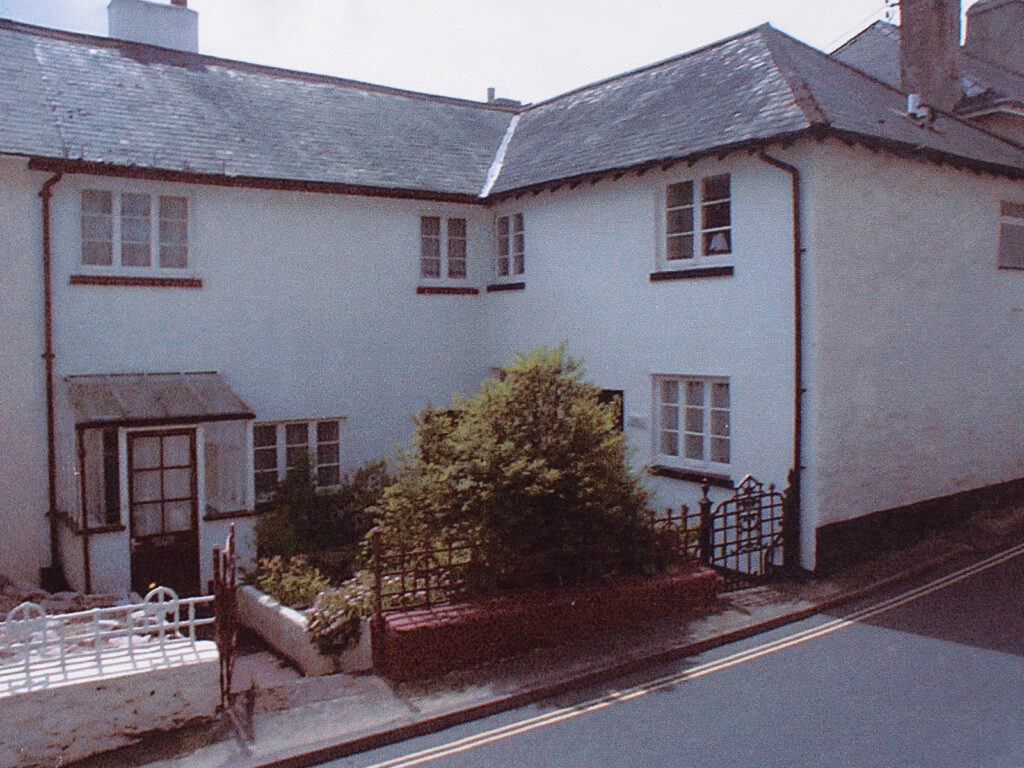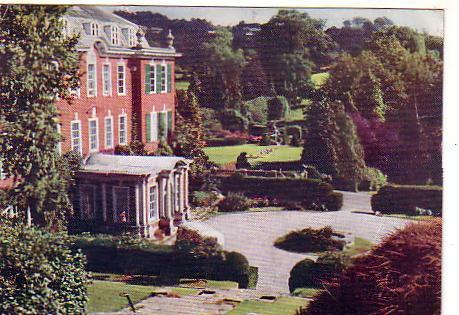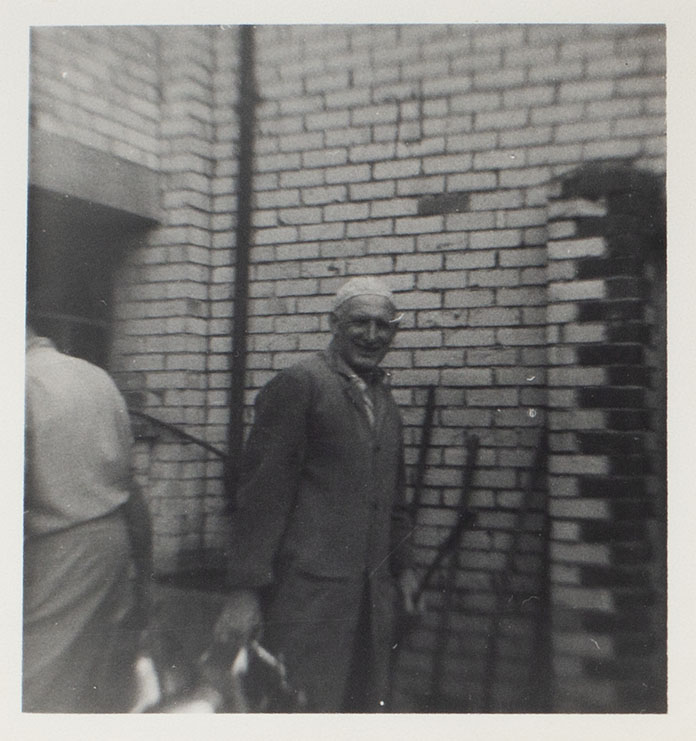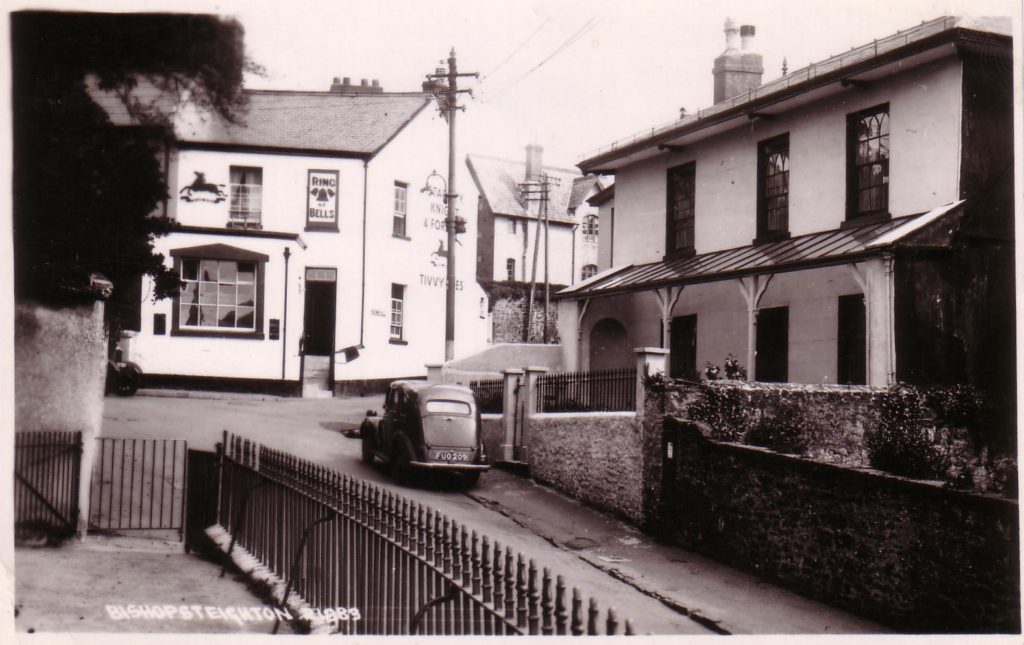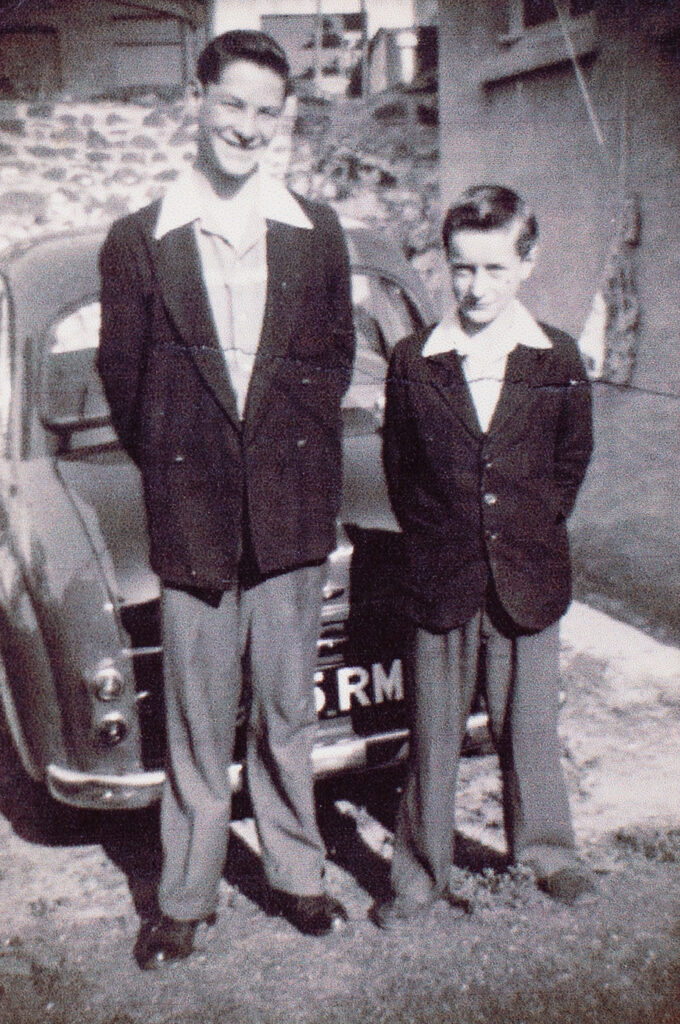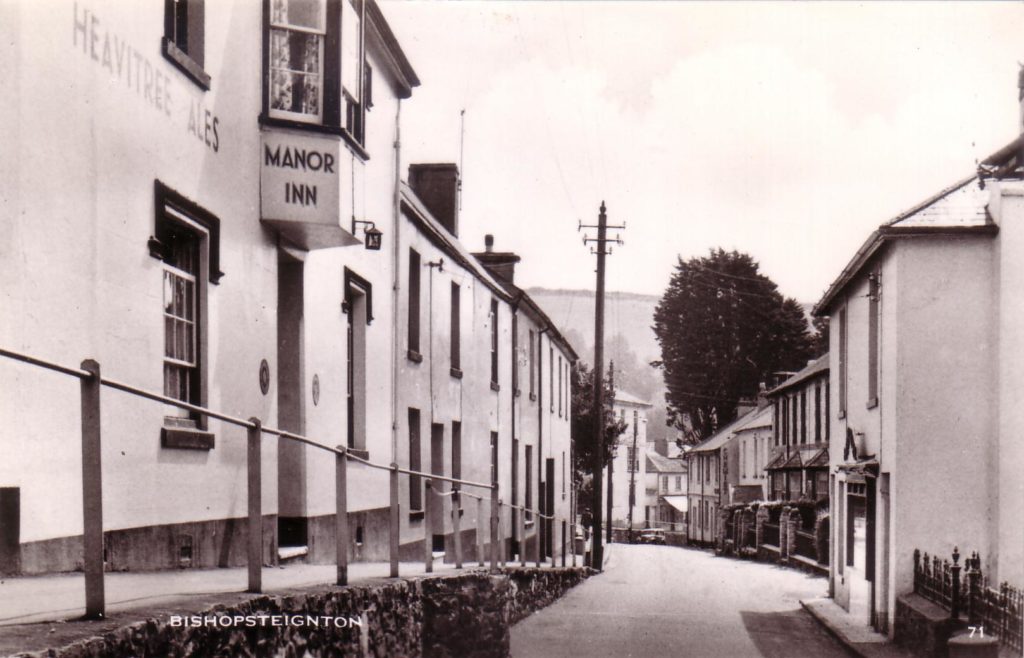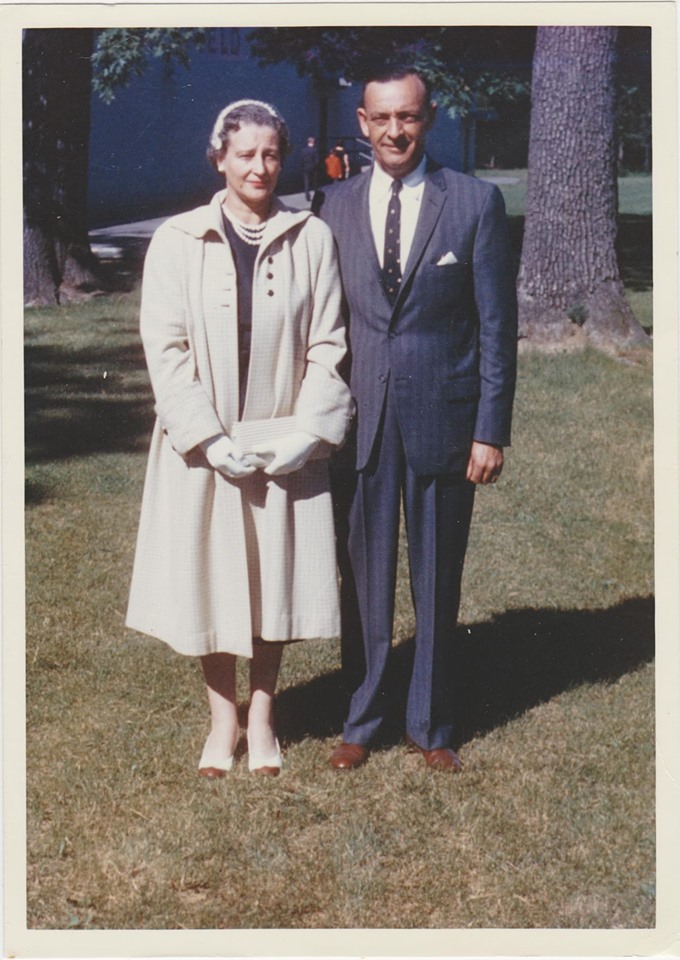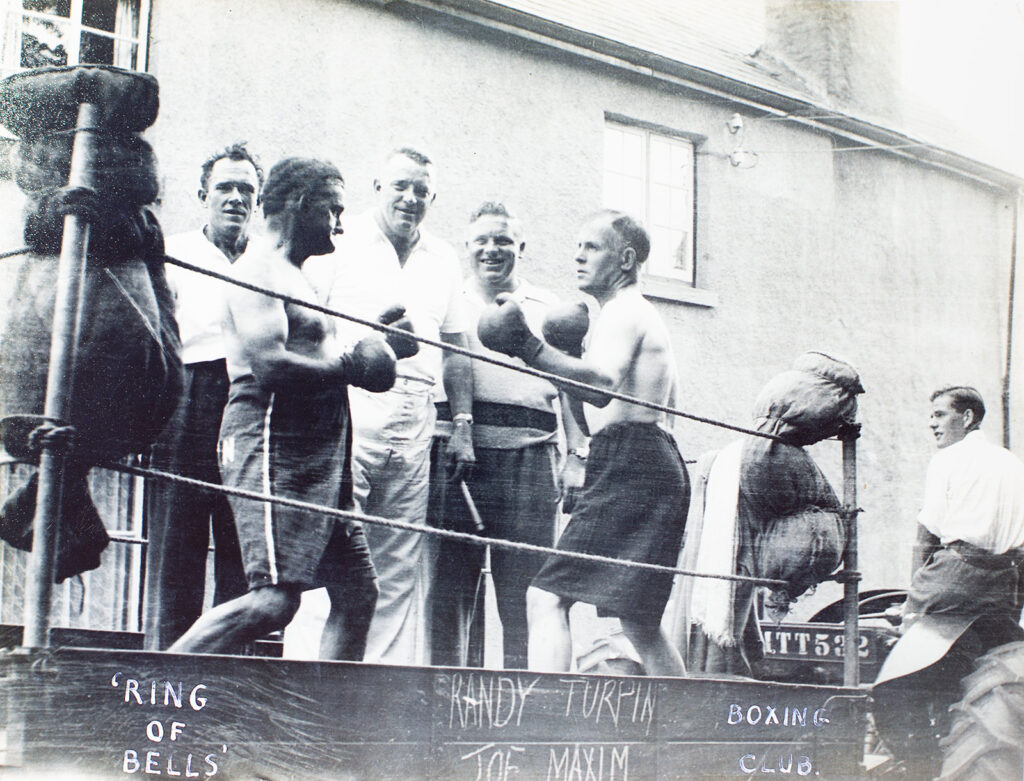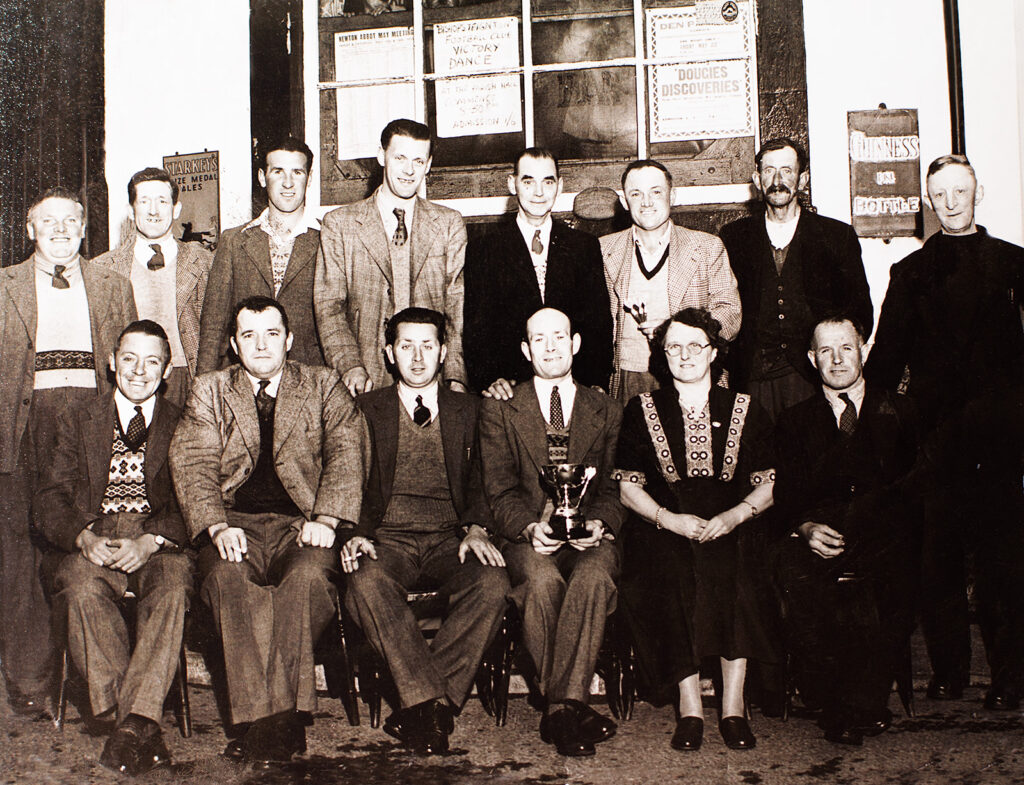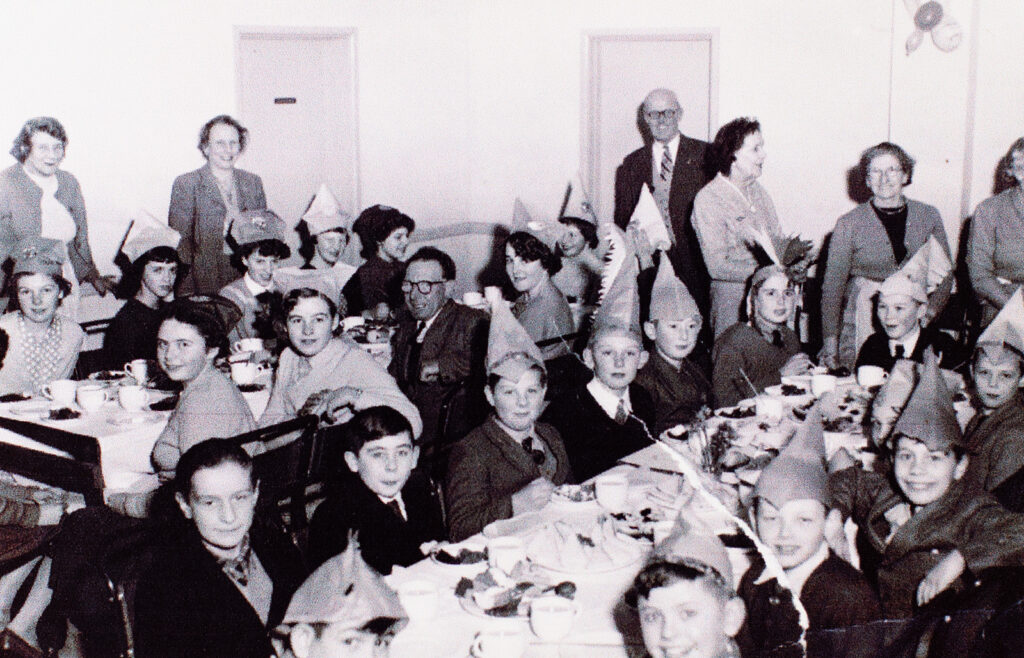Colin Back Born and Raised part 2 (8 minutes)
Fore Street was always the hub of the village with mum’s walking their children to and from school then joining grans, aunties and other ladies, shopping and generally chatting and catching up on the latest family news. It was so relaxed and friendly, everyone knew everyone else.
“…a special bond had developed between the village women folk…”
I feel a special bond had developed between the village women folk who had supported each other through the more difficult times of war years and the following years of adjustment. I cannot remember anyone falling out or disagreements happening.
There were no gatherings on a Monday; that was washing and bed changing day. Monday dinner (lunch) was cold meat and bubble & squeak made from the Sunday leftovers.
Nurse Robins and her husband Jack known to us as (uncle) Johnny, lived in the District Nurse cottage, two doors from us. They had become friends of my parents from day one. Uncle Johnny was a gardener at Lindridge House and Park. This magnificent house was destroyed by fire in 1963. He travelled to work each day on a small ‘two stroke’ motorbike.
“She was an avid chain smoker.”
Nurse Robins did her rounds on foot or by bicycle to start with and then later drove a pale green Austin A30. She was an avid chain smoker. They had no children but (uncle) Johnny would buy fireworks each year for us. On bonfire night, it was my youngest brother’s job to knock on their door and ask nurse if (uncle) Johnny could come out to play. He would join us to set off his ’box of fun.’ I think it was an excuse for him to have some fireworks.
Apart from the shops, I can remember milk delivered by Farmer and Mrs Hooper of Ashwell Farm on the back of an old van. They measured the milk from churns with long handled ‘milk measures’, the milk then being poured into our own jug.
At one time, Mike Stevens from Kingsteignton introduced a new milk round; he later married Maureen Honey from Bishopsteignton. Maureen’s mum was the cook in charge at the school canteen on Radway Hill. Mum did not have a fridge so in the summer any milk remaining at the end of the day, was boiled and cooled to keep it overnight.
For a short time, we got our milk in wide necked bottles with a cardboard top. These milk tops were highly prized by us children especially if we could get them off without creating the small hole in the middle. The tops became part of a game called “milkies”. The aim was for you and your rival to flick your bottle tops from about six feet, if it landed on your opponent’s top you won their top. The winner was the one with most.
This joined other activities such as marbles, there were large and small sizes made of glass with different colour streaks running through them. They had different names such as ‘red alley’, ‘blue eye’ and ‘green goblin’ there were many other colours, some more valuable because of limited colour numbers. Another annual activity was conkers, collecting them and using a skewer or bradawl to make a hole through which to thread a knotted string. Great fun as long as you watched your knuckles.
On fine days during the school holidays and sometimes on a Saturday we would ‘collect car numbers’ a useless activity but it got us out from under mum’s feet. There were very few cars in the village so we would walk to Coles Barn and record the cars travelling between Teignmouth and Newton Abbot.
I always enjoyed the ‘I-Spy books’ with different ones used to record birds, flowers, trees, butterflies, and many more. These contained pictures and information. The first ones we had were between 6d and 1/- which was quite expensive at the time. We always hoped to get one for our birthday or Christmas.
“One could follow a blooded watery line to his next customer.”
There was also Captain Nathan who delivered fresh fish once a week on his motorbike with an adapted sidecar. The fish began their journey, on a pile of ice, in the body of the sidecar with a wooden slab as a lid. He would cut, gut and fillet the fish while you waited; the entrails and off cuts were then swept into a container with the fresh fish, the knives and boards were wiped off with a well-used cloth and then it was “next please”. The ice would gradually melt and one could follow a blooded watery line to his next customer.
The coal merchant would call and carry sacks of coal from the front to the back of the house. The kids would pick up any bits of coal that fell out of the sacks and put them in a bag before the coal man had chance to collect them on his way back to the lorry.
During autumn, we would have a delivery of logs; it was the job of dad and my elder brothers to chop to make sticks and smaller logs for the fire. The younger children stacked the sticks and logs.
Mr J Dyer, who had a piggery at Flow Point, would call once a week, free of charge to collect pig food, (food waste, peelings, rotting veg etc.) from houses. I hated the smell of his old van. I think this must have been a service left over from the war years, when nothing was to be wasted. When Mr and Mrs Gurr took over the butcher shop of my aunt and uncle, he started to keep his own pigs, my mother’s food waste then went to him.
A Rag and Bone man visited the village on occasions, if we were lucky and mum could find something to bargain with, the children were rewarded with a goldfish. They never however seemed to last long.
The ‘CORONA’ man also called with a variety of fizzy drinks. The bottles were fitted with a wire-hinged top to keep the fizz in. Sometimes when opening, it would sound like an explosion. I liked the raspberry and the dandelion & burdock. Mum would pay a few pence a fortnight, which was marked on a card so we would have some Corona drinks for the Christmas holidays.
The Corona would complement the foods mum had been preparing through the year in reediness for Christmas. There were the pickles and chutneys as well as making the Christmas puddings (the pudding eaten this year had been made the previous year). The silver sixpences were added unseen when served, so everyone got one, at the end of the day the sixpences were collected, washed and put away safely for the next year. The cake was made part way through the year so it would mature. For good luck, and to make a wish, we all had a stir of the Christmas pudding and cake during the making.
“We knew Father Christmas had been.”
Christmas was fun; we woke to a sock (stocking) at the end of the bed with an orange, some walnuts, a few sweets and a 2/- piece. We then knew Father Christmas had been. When mum and dad were ready, we all went downstairs where the rest of the gifts were.
Colin’s reminiscences are continued in 6 more parts, visit Born and Raised in Bishopsteignton to read more.
Thank you to Colin Back for his stories and to him and Rowena Bradnam for the images.
This article was assembled by Dawn Rogers and the Bishopsteignton Heritage Hub team.
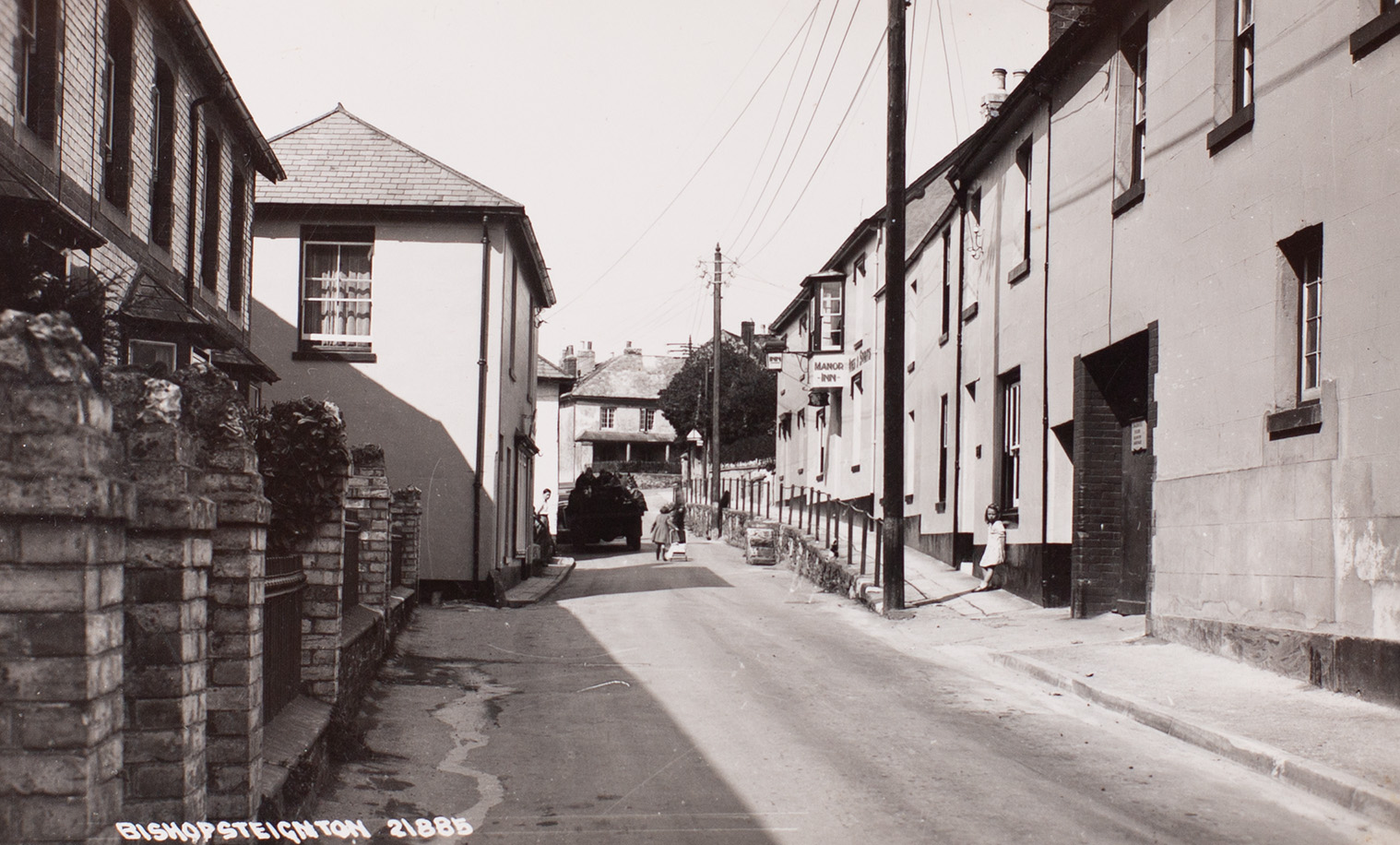
Fore Street
Fore Street was always the hub of the village with mum’s walking their children to and from school then joining grans, aunties and other ladies, shopping and generally chatting and catching up on the latest family news. It was so relaxed and friendly, everyone knew everyone else.
“…a special bond had developed between the village women folk…”
I feel a special bond had developed between the village women folk who had supported each other through the more difficult times of war years and the following years of adjustment. I cannot remember anyone falling out or disagreements happening.
There were no gatherings on a Monday; that was washing and bed changing day. Monday dinner (lunch) was cold meat and bubble & squeak made from the Sunday leftovers.
Nurse Robins and her husband Jack known to us as (uncle) Johnny, lived in the District Nurse cottage, two doors from us. They had become friends of my parents from day one. Uncle Johnny was a gardener at Lindridge House and Park. This magnificent house was destroyed by fire in 1963. He travelled to work each day on a small ‘two stroke’ motorbike.
“She was an avid chain smoker.”
Nurse Robins did her rounds on foot or by bicycle to start with and then later drove a pale green Austin A30. She was an avid chain smoker. They had no children but (uncle) Johnny would buy fireworks each year for us. On bonfire night, it was my youngest brother’s job to knock on their door and ask nurse if (uncle) Johnny could come out to play. He would join us to set off his ’box of fun.’ I think it was an excuse for him to have some fireworks.
Apart from the shops, I can remember milk delivered by Farmer and Mrs Hooper of Ashwell Farm on the back of an old van. They measured the milk from churns with long handled ‘milk measures’, the milk then being poured into our own jug.
At one time, Mike Stevens from Kingsteignton introduced a new milk round; he later married Maureen Honey from Bishopsteignton. Maureen’s mum was the cook in charge at the school canteen on Radway Hill. Mum did not have a fridge so in the summer any milk remaining at the end of the day, was boiled and cooled to keep it overnight.
For a short time, we got our milk in wide necked bottles with a cardboard top. These milk tops were highly prized by us children especially if we could get them off without creating the small hole in the middle. The tops became part of a game called “milkies”. The aim was for you and your rival to flick your bottle tops from about six feet, if it landed on your opponent’s top you won their top. The winner was the one with most.
This joined other activities such as marbles, there were large and small sizes made of glass with different colour streaks running through them. They had different names such as ‘red alley’, ‘blue eye’ and ‘green goblin’ there were many other colours, some more valuable because of limited colour numbers. Another annual activity was conkers, collecting them and using a skewer or bradawl to make a hole through which to thread a knotted string. Great fun as long as you watched your knuckles.
On fine days during the school holidays and sometimes on a Saturday we would ‘collect car numbers’ a useless activity but it got us out from under mum’s feet. There were very few cars in the village so we would walk to Coles Barn and record the cars travelling between Teignmouth and Newton Abbot.
I always enjoyed the ‘I-Spy books’ with different ones used to record birds, flowers, trees, butterflies, and many more. These contained pictures and information. The first ones we had were between 6d and 1/- which was quite expensive at the time. We always hoped to get one for our birthday or Christmas.
“One could follow a blooded watery line to his next customer.”
There was also Captain Nathan who delivered fresh fish once a week on his motorbike with an adapted sidecar. The fish began their journey, on a pile of ice, in the body of the sidecar with a wooden slab as a lid. He would cut, gut and fillet the fish while you waited; the entrails and off cuts were then swept into a container with the fresh fish, the knives and boards were wiped off with a well-used cloth and then it was “next please”. The ice would gradually melt and one could follow a blooded watery line to his next customer.
The coal merchant would call and carry sacks of coal from the front to the back of the house. The kids would pick up any bits of coal that fell out of the sacks and put them in a bag before the coal man had chance to collect them on his way back to the lorry.
During autumn, we would have a delivery of logs; it was the job of dad and my elder brothers to chop to make sticks and smaller logs for the fire. The younger children stacked the sticks and logs.
Mr J Dyer, who had a piggery at Flow Point, would call once a week, free of charge to collect pig food, (food waste, peelings, rotting veg etc.) from houses. I hated the smell of his old van. I think this must have been a service left over from the war years, when nothing was to be wasted. When Mr and Mrs Gurr took over the butcher shop of my aunt and uncle, he started to keep his own pigs, my mother’s food waste then went to him.
A Rag and Bone man visited the village on occasions, if we were lucky and mum could find something to bargain with, the children were rewarded with a goldfish. They never however seemed to last long.
The ‘CORONA’ man also called with a variety of fizzy drinks. The bottles were fitted with a wire-hinged top to keep the fizz in. Sometimes when opening, it would sound like an explosion. I liked the raspberry and the dandelion & burdock. Mum would pay a few pence a fortnight, which was marked on a card so we would have some Corona drinks for the Christmas holidays.
The Corona would complement the foods mum had been preparing through the year in reediness for Christmas. There were the pickles and chutneys as well as making the Christmas puddings (the pudding eaten this year had been made the previous year). The silver sixpences were added unseen when served, so everyone got one, at the end of the day the sixpences were collected, washed and put away safely for the next year. The cake was made part way through the year so it would mature. For good luck, and to make a wish, we all had a stir of the Christmas pudding and cake during the making.
“We knew Father Christmas had been.”
Christmas was fun; we woke to a sock (stocking) at the end of the bed with an orange, some walnuts, a few sweets and a 2/- piece. We then knew Father Christmas had been. When mum and dad were ready, we all went downstairs where the rest of the gifts were.
Colin’s reminiscences are continued in 6 more parts, visit Born and Raised in Bishopsteignton to read more.
Thank you to Colin Back for his stories and to him and Rowena Bradnam for the images.
This article was assembled by Dawn Rogers and the Bishopsteignton Heritage Hub team.

